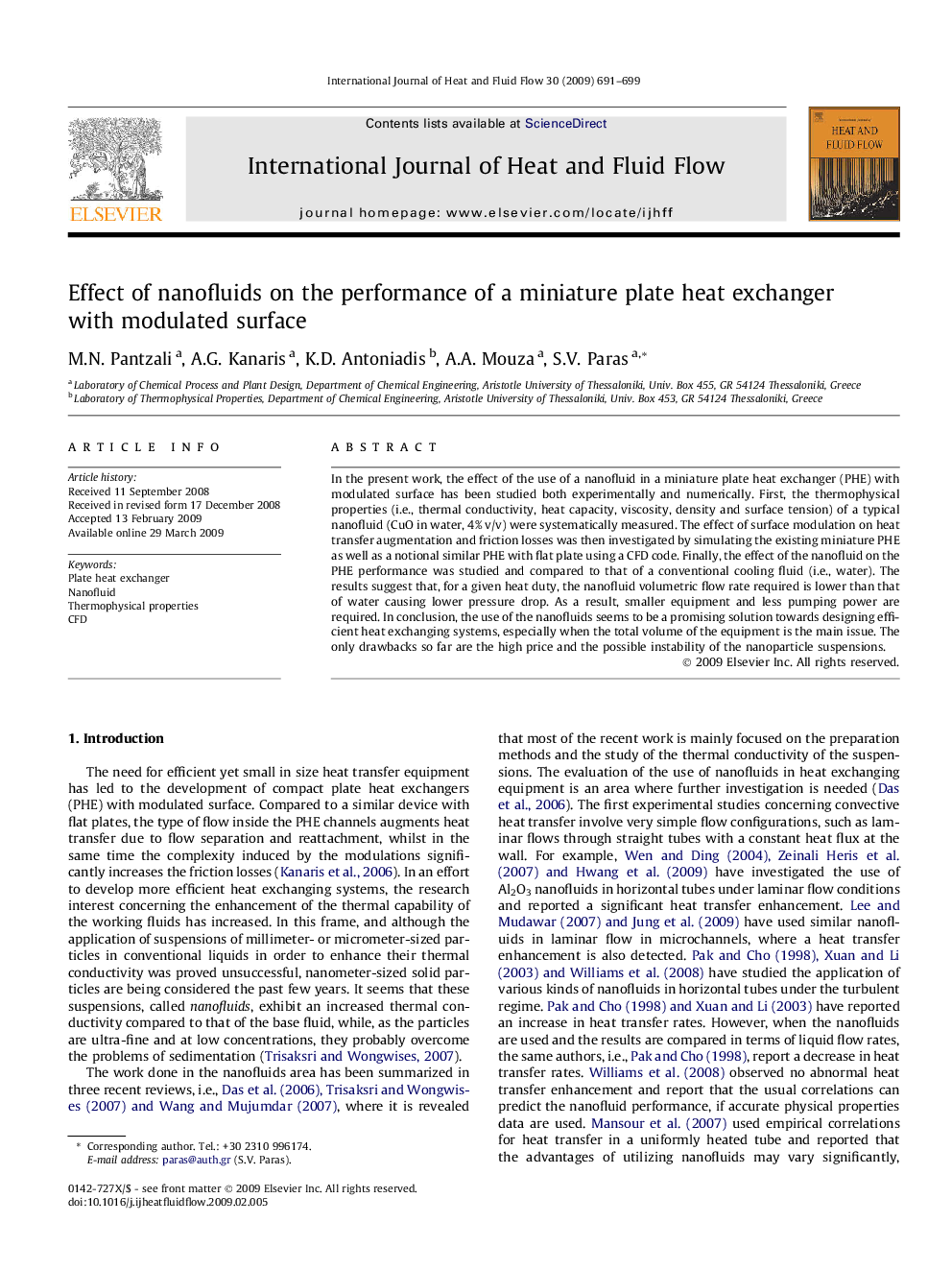| Article ID | Journal | Published Year | Pages | File Type |
|---|---|---|---|---|
| 655952 | International Journal of Heat and Fluid Flow | 2009 | 9 Pages |
In the present work, the effect of the use of a nanofluid in a miniature plate heat exchanger (PHE) with modulated surface has been studied both experimentally and numerically. First, the thermophysical properties (i.e., thermal conductivity, heat capacity, viscosity, density and surface tension) of a typical nanofluid (CuO in water, 4% v/v) were systematically measured. The effect of surface modulation on heat transfer augmentation and friction losses was then investigated by simulating the existing miniature PHE as well as a notional similar PHE with flat plate using a CFD code. Finally, the effect of the nanofluid on the PHE performance was studied and compared to that of a conventional cooling fluid (i.e., water). The results suggest that, for a given heat duty, the nanofluid volumetric flow rate required is lower than that of water causing lower pressure drop. As a result, smaller equipment and less pumping power are required. In conclusion, the use of the nanofluids seems to be a promising solution towards designing efficient heat exchanging systems, especially when the total volume of the equipment is the main issue. The only drawbacks so far are the high price and the possible instability of the nanoparticle suspensions.
